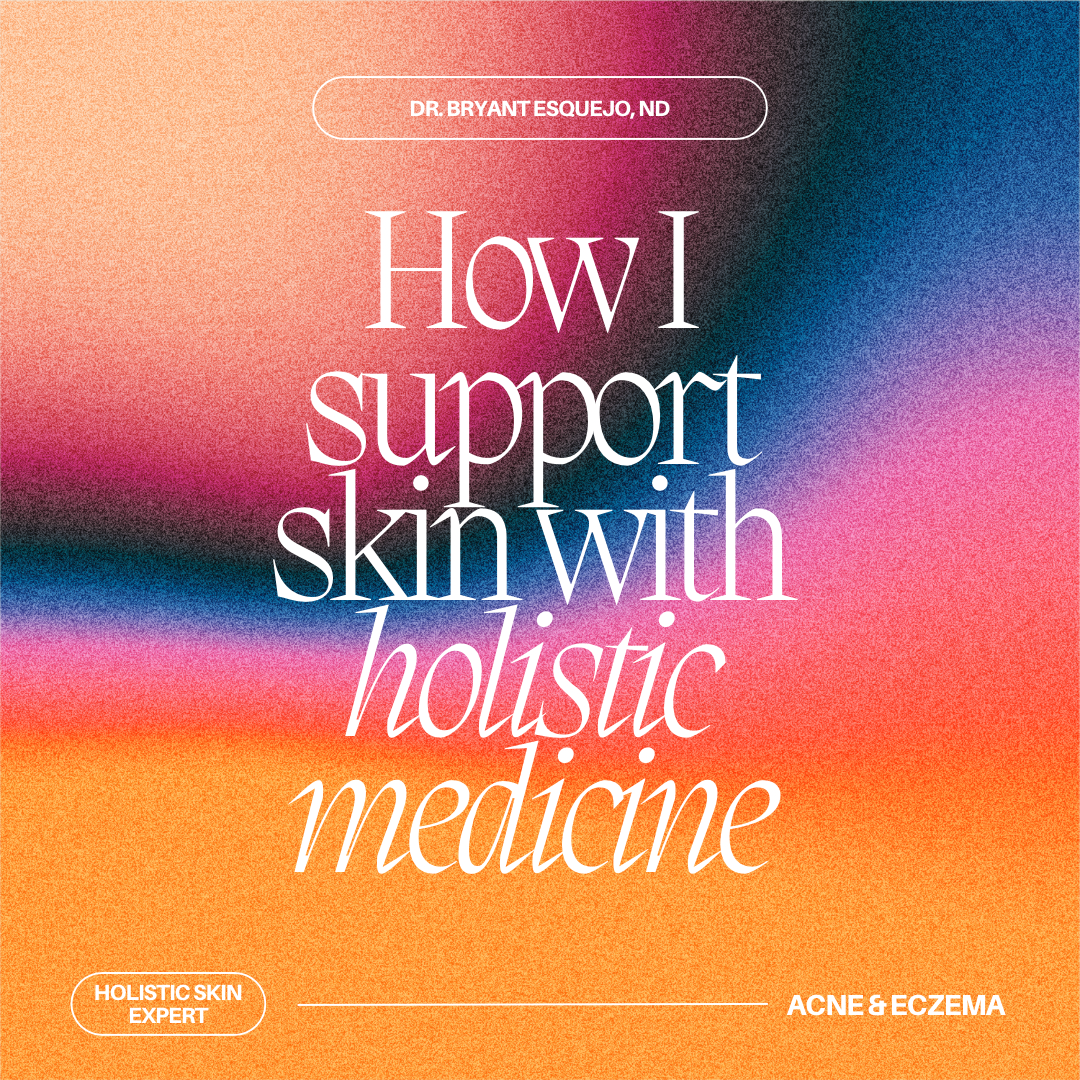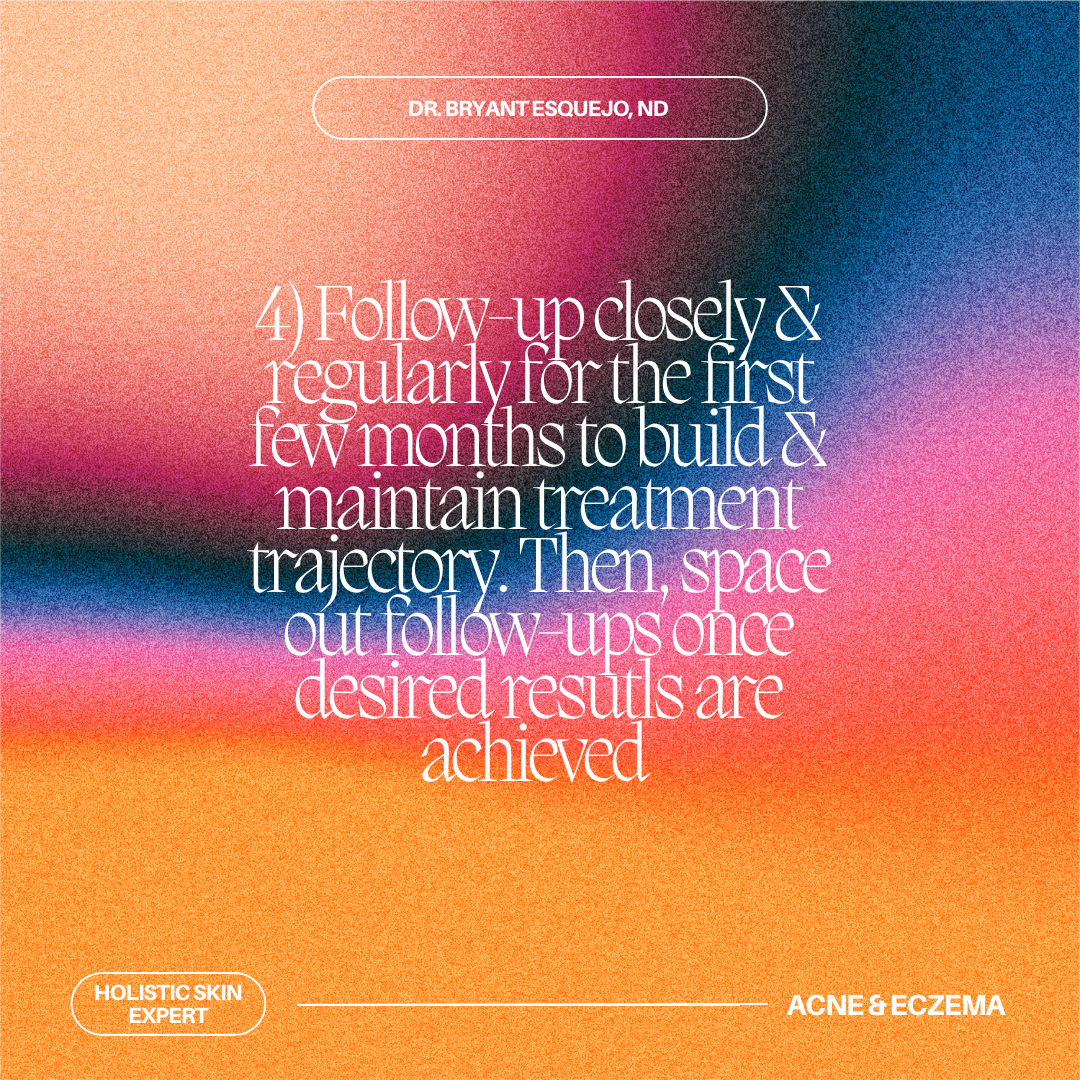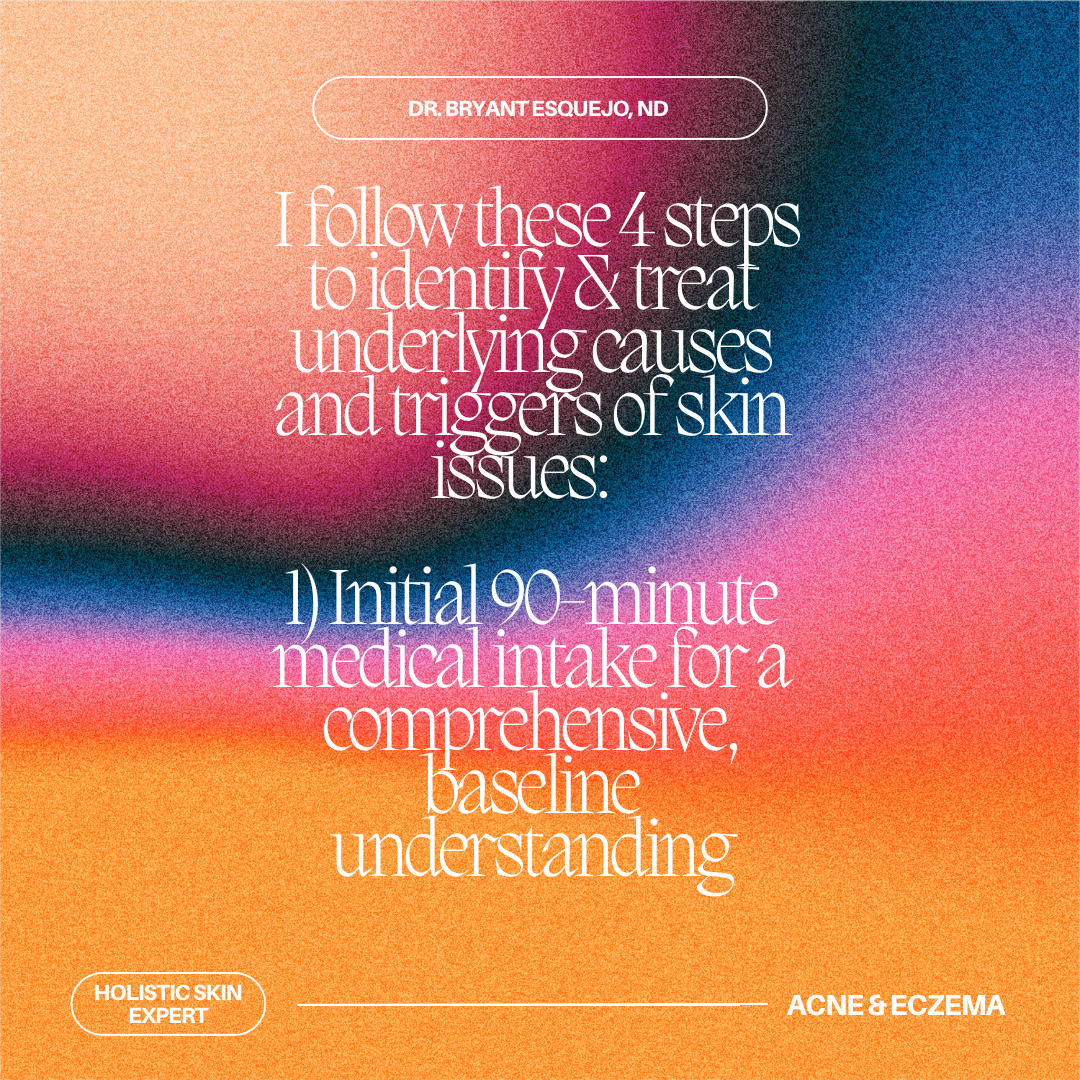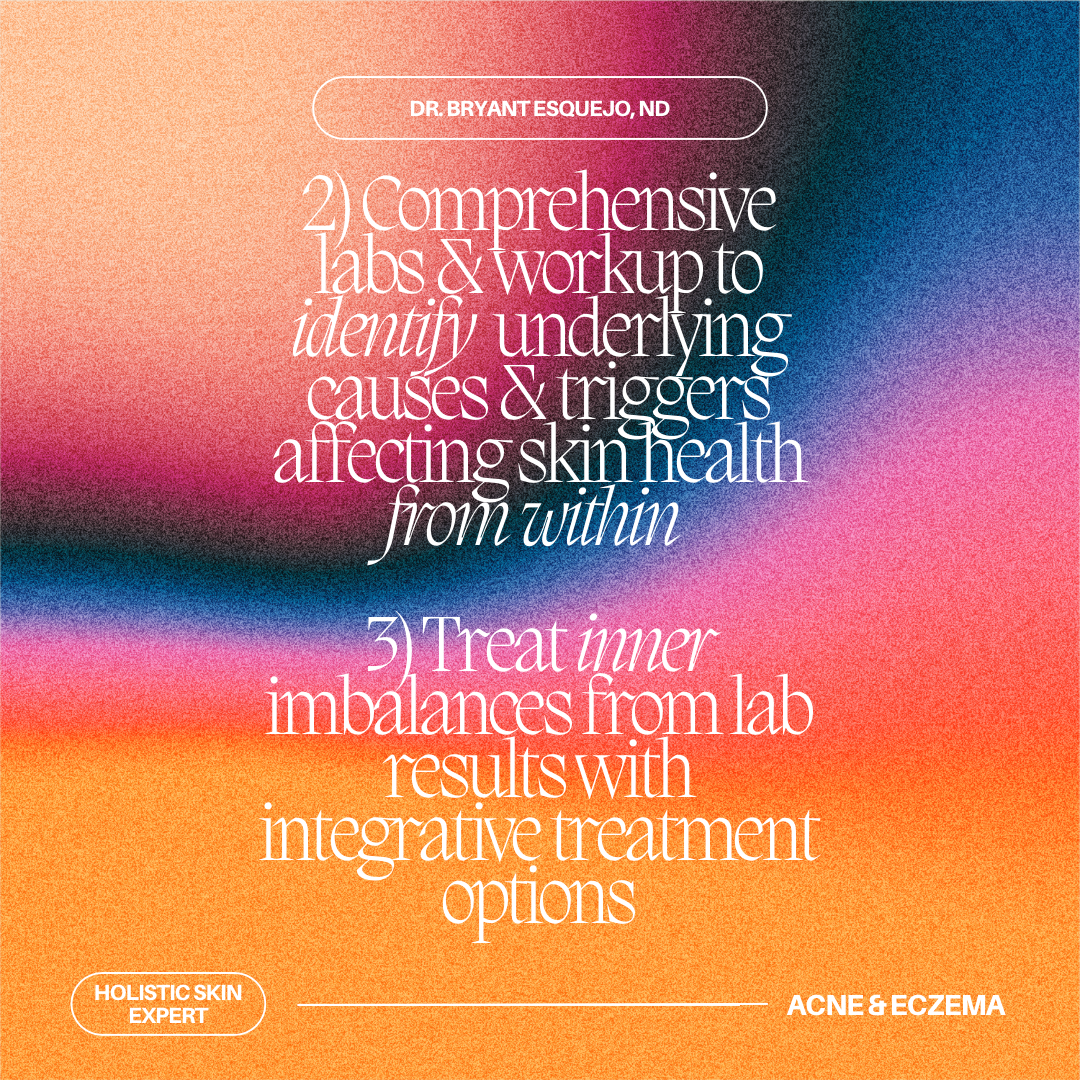How is FUNGAL ACNE different from HORMONAL Acne?
This blog post is for you if you have been wanting to learn the difference between fungal acne and regular acne and/or have been experiencing adult acne & want to achieve healthier and clearer skin holistically & integrative-ly.
Many patients see me for adjunctive, naturopathic treatment for acne. And, as a licensed naturopathic doctor, I aim to treat the root cause of a person’s disease state to reduce the severity of their symptoms. Recently, many people have been asking me about regular acne and fungal acne.
There are differences between regular acne (Acne vulgaris) and fungal acne (Pityrosporum/Malassezia folliculitis). Both can look like each other, and both can happen simultaneously.
The differences are: 1) The root causes; 2) The risk factors; 3) The symptoms; and 4) The treatment.
Since both regular acne and fungal acne can look like each other and can happen at the same time, it can be confusing for a lot of people when trying to figure out what is happening on their skin! Good thing you’re reading this blog post since…
In this post you will learn about those differences and more. Continue reading below to learn more!
DISCLAIMER: THESE STATEMENTS HAVE NOT BEEN EVALUATED BY THE FOOD AND DRUG ADMINISTRATION. THIS POST DOES NOT CONSTITUTE AS MEDICAL ADVICE; IS NOT MEANT TO DIAGNOSE, PREVENT, TREAT, OR CURE ANY CONDITIONS OR DISEASE; AND IS MEANT FOR EDUCATIONAL PURPOSES ONLY. THE INFORMATION IN THIS POST DOES NOT REPLACE OR SUBSTITUTE THE ADVICE OF YOUR MEDICAL PROVIDER. SPEAK TO YOUR DOCTOR BEFORE STARTING ANY NEW TREATMENTS OR SUPPLEMENTS OR BOOK YOUR APPOINTMENT WITH ME TODAY.
ACNE VULGARIS
ROOT CAUSE:
The root cause of acne vulgaris is multi-faceted. It involves hormones, skin oil (aka sebum) production, and bacteria. When talking about why acne happens, you can look at acne on the skin level and looking at deeper issues affecting skin health.
When looking at acne on the skin level, science says that 4 elements are necessary:
Excess oil production
Keratin plug formation
Bacteria
Bacteria-caused inflammation
When looking at deeper, science shows that androgen hormones contribute to the cascade that triggers acne on the skin level. Some examples of androgens are DHEA, testosterone, and di-hydro testosterone (DHT).
Hallmark features:
Acneic lesions can be papules, pustules, and nodules (nodules are usually large and painful).
Common locations of acne vulgaris: Face, forehead, chest, shoulders, and upper back.
RISK FACTORS:
SOME RISK FACTORS (BUT NOT ALL) ARE:
Skincare routine: Occluding skin care products have the potential to block pores and increase risk for acne.
Diet: Dairy consumption has been found to be associated with the development of acne vulgaris, specifically with whole milk, low-fat milk, and skim milk. It has also been shown that consumption of cheese and carbohydrates were associated with the development of acne, and that consumption of fats were negatively correlated with the development of acne.
Insulin resistance: High levels of insulin (like what happens in insulin resistance) increases levels of insulin growth factor-1 (IGF-1), which can directly cause excess sebum production, but also activate the production of androgens, which also causes excess sebum production.
Stress: The adrenal glands release DHEA, which can transform into DHEA-S and testosterone. Stress disorders can activate the adrenal glands to release DHEA and increase levels of a DHEA metabolite called DHEA-S. And, DHEA-S plays a role in the development of acne in women.
Post-hormonal birth control: Those coming off of hormonal birth control can experience acne due to a rise of androgens after discontinuing birth control, especially hormonal birth control with drospirenone. Additionally, literature reveals that hormonal birth control can deplete zinc in addition to other nutrients (B12, B2, B6, folate, magnesium, and selenium). And, zinc supplementation has been shown to provide slight benefit to reduce acne vulgaris.
NATUROPATHIC OPTIONS:
Licensed Naturopathic Doctors (NDs) are trained to provide integrative medical care, and are experts in natural medicine.
Naturopathic treatment for acne vulgaris is holistic & personalized and looks at a person’s risk factors, root causes, and clinical picture to fully understand how to recommend the best-suited treatment.
Some integrative, naturopathic treatment options (but not all) that may be considered (and depending on state scope of practice) are:
Change skin care routine with less-occlusive topical products
Address insulin resistance/blood sugar: Low-glycemic diet can be helpful to reduce levels of IGF-1, which is a contributor to the development of acne. There is also literature that supports that the ketogenic diet can reduce levels of levels of IGF-1 as well. Studies also show that omega-3 fatty acids can reduce IGF-1. There are also herbs and supplements that licensed naturopathic doctors commonly use to support healthy blood sugar, such as inositol, berberine, and more.
Address adrenal function: There are a variety of methods to support optimal adrenal function, such as lifestyle recommendations (targeted exercise and mindfulness strategies); targeted vitamin, mineral, and amino acid supplementation; targeted herbal medicines with the use of nervine and adaptogenic herbs; and more.
Address gut health: There is a connection between the gut and the skin, particularly with the gut microbiome and the skin. Lactobacillus rhamnosus SP1 has been shown to improve acne when taken for 12 weeks with those taking the probiotic showing lower levels of IGF-1 in the skin.
Post-hormonal birth control: Replete nutrients depleted from hormonal birth control to support optimal cellular and tissue function.
Topical pharmaceuticals: Antibiotics, benzoyl peroxide, damson, retinoids, and more
Oral pharmaceuticals: Antibiotics, hormonal birth control, isotretinoin. The gold-standard treatment for severe acne by the American Academy of Dermatology is isotretinoin.
Topical procedures: Peels, laser, and light therapies
FUNGAL ACNE (PITYROSPORUM/MALASSEZIA FOLLICULITIS)
ROOT CAUSE:
Pityrosporum (aka Malassezia) is a naturally-occuring yeast commonly found on the skin, much like Proprionibacterium acnes. This yeast can infect the pore/hair follicle, leading to symptoms similar to acne vulgaris.
Once in the pore/hair follicle, the yeast will degrade sebum, which causes an immunological and inflammatory response, leading to the development of acne. Additionally, Candida, another type of naturally-occurring yeast, has been isolated from acne lesions.
Usually, Malassezia folliculitis does not respond to conventional acne therapies, such as topical and oral pharmaceuticals.
Hallmark features:
Fungal acne usually worsen after antibiotics; are usually itchy in-nature; and are usually uniform-looking papules or pustules.
Common locations for fungal acne: Forehead extending to the hairline and on the upper portion of the back. Fungal acne can also happen on the chest and upper limbs.
RISK FACTORS:
SOME RISK FACTORS (BUT NOT ALL) ARE:
Hygiene & climate: Excess sweating can increase risk for fungal acne and fungal acne is more common in hot and humid climates.
Skincare routine: Occlusive topical products may promote flares.
Pharmaceuticals: Immunosuppressive medication and broad-spectrum antibiotics can increase risk for fungal acne
Immunosuppression: Diabetes, HIV, and blood cancers can increase risk for fungal acne
NATUROPATHIC OPTIONS:
Licensed ND’s will seek to identify root causes and potential organ imbalances to treat fungal acne.
Treatment can be integrative with a combination of natural and pharmaceutical options (depending on state scope of practice), and may include a combination of (but not all):
Change skin care routine with less-occlusive topical products
Address blood sugar: Since one of the root causes is diabetes, managing and controlling healthy blood sugar will be an important aspect to address. Optimizing blood sugar can involve dietary options with low-glycemic foods, herbal options, and supplements.
Topical pharmaceuticals: Topical selenium sulfide and topical azoles
Oral pharamceuticals: Oral antifungals
Topical procedures: Light therapies
WHAT IF YOU WANT TO ADDRESS YOUR ADULT ACNE HOLISTICALLY?
The answer is simple: Work with a licensed naturopathic provider. As mentioned earlier, licensed naturopathic providers are experts in holistic and integrative medicine.
As integrative medicine experts, we are trained in both natural and conventional options. So, you will be able to capture a vast array of treatment options to help you achieve your skin goals when you work with a licensed naturoapthic doctor.
If you want to see me, I see patients in-person and virtually. The only caveat is that since I am only licensed in the state of California, I can only see patients who are physically in the state of California (especially for telehealth patients).
SUMMARY & TAKEAWAYS (TL;DR)
Regular acne and fungal acne are infections by naturally-occurring micro-organisms on the skin that both infect the pore/hair follicle. Regular acne (acne vulgaris) is caused by the bacteria Proprionibacterium acnes and fungal acne is caused by the yeast Pityrosporum/Malassezia. Their symptoms and locations can also be different:
Acne vulgaris is usually inflammatory/painful in nature; usually appears as papules, pustules, or nodules; usually found on the face, forehead, chest, shoulders, and upper back.
Fungal acne is usually itchy in nature; worsens after antibiotics; usually appears as uniform-looking papules or pustules; and usually found on the forehead extending to the hair line, upper back, chest, and upper limbs.
There are also different root causes for acne vulgaris and fungal acne, which determine conventional and naturopathic treatment for each condition
Want to learn about skin health from a holistic & integrative POV? Read these blog posts to learn more:
To stay up-to-date about future articles on my website, click here sure to sign up for my email newsletter. And, if you want to set up an appointment with me, click here.






